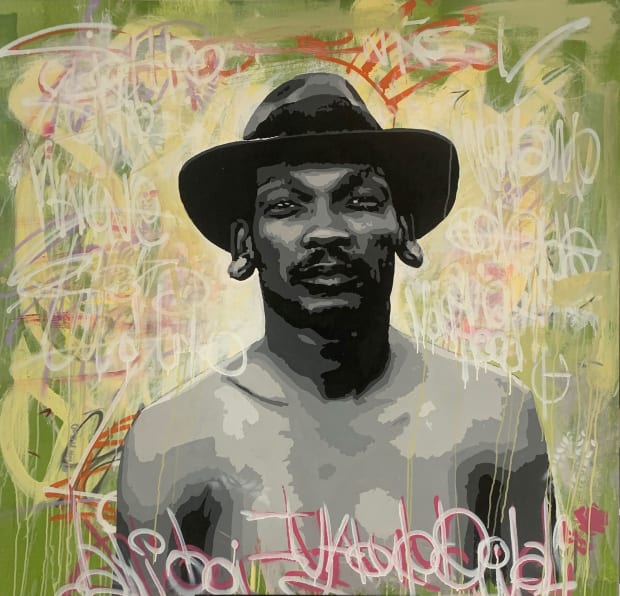-

-
Q: Other influences on your work are subcultures, one particularly being hip-hop. Why are subcultures of particular interest to your artistic practice?A: Growing up, when we were introduced to hip-hop, we thought that we were all rappers. So hip-hop was a genre I could relate to personally. I even used to have a hip hop group, but like graffiti, it was just something we did as kids. That is why there is a lot of graffiti in my work. My background in graphic design also has a significant influence on my work.Q: Some of your work includes painted portraits of leading Black icons in art, poetry, music, and politics (such as Angela Davis, Max Roach, Sade Adu, Salome Bey). What do these figures represent for you?A: These figures represent Black struggle. Growing up and reading about them has had an impact on my life, because they played a significant role in the art and music industries and they influenced my involvement in the art industry. I would like to say that I don’t have a plan to make my work political, it just happens. I would say that it is subconscious.Q: Some of your work references the erosion of African culture and traditions by Western trends and increasing globalisation and modernity. Keeping in mind the cultural hegemony of the West, do you think that there can be a co-existence between African and Western values?A: I think there is already a co-existence. I believe that Africa and the West are the same to an extent. There are also many African countries that look to the West in terms of rebuilding their societies along democratic beliefs.Q: Would you say that your work fits into the art movements of Pop Art or Abstract Expressionism or an entirely different art movement emerging within the context of African art?A: I think my art is a mixture of Pop Art and Abstract Expression which is a movement in itself emerging within the context of African art. The graffiti is not very realistic because I try to mimic the graffiti on street walls which often overlap, in a process called graffiti tagging.
-


